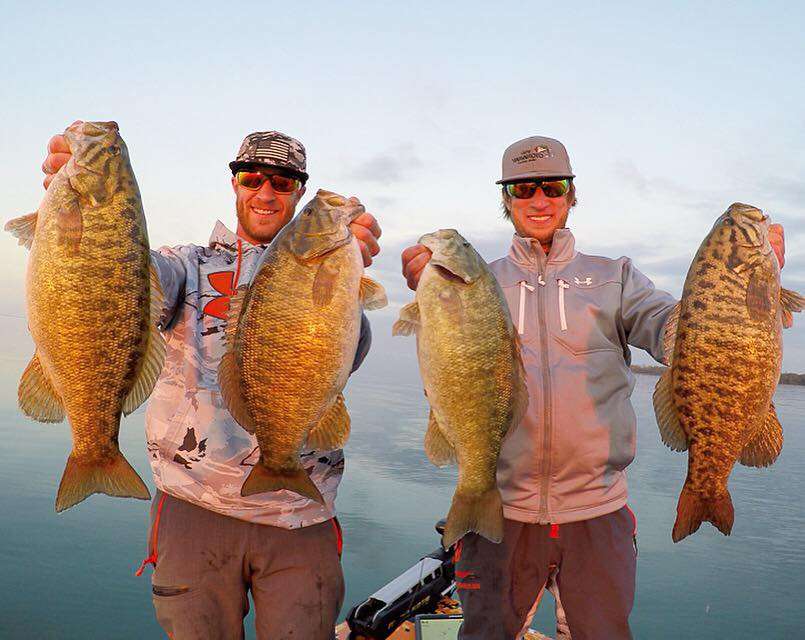
For a professional angler, it usually seems like there are more disadvantages to living up north than there are advantages. Down in Florida or Texas, you may be able to chase monster bass all year long. Up here in Ohio, we don’t have a lot of big lakes or big bass, but one of the great things about living here is that we learn how to grind and we learn how to fish in cold weather.
It’s 23 degrees out as I write this, and there’s ice on the local ponds, but if there’s a decent day on the horizon and if I can find some open water, you can bet I’ll be out on one of the local lakes. I actually enjoy winter fishing. You generally have the water all to yourself and if you have the proper gear the cold weather is definitely tolerable. In fact, some of the best days I’ve had in Ohio were when the fish were in their winter patterns. You won’t get a lot of bites, but it’s often the best time to catch the quality a lake has to offer.
The biggest change that you have to make is how you chase them and what you use to catch them. From spring through fall most of us get by with a handful of presentations, but from winter until the beginning of spring you have to scrap your standbys and do something different. All of the articles you read will stress that it’s important to fish slowly, but that’s only half the story. The fish aren’t dead – they still have to eat – so if all you do is drag a jig around at a snail’s pace a lot of time you’re going to miss the bite. I still like to cover as much water as possible, but it can be tricky. The pace involves keeping the boat moving at a decent pace but making sure your lure is not moving too fast to trigger a bite. Once you find the fish, they are often loaded in that area and for a good reason. You can then slow down and really catch them, but if you crawl along all day you may never locate them. Don’t worry if your search takes a while – fishing in the later part of the day is usually better as the water temperature rises.
Many people expect that Cherokee will be won on some sort of oddball technique like the float and fly. To be honest, I hope that there’s a better way to catch them. In the early to mid-winter, the fish are primarily feeding on dying shad more than on crawfish, so I generally stick to baitfish imitations, and some of my chosen preferences are a smoke colored Yamamoto single tail grub on a jig head, a jerkbait and a tight wiggling crankbait. If I find the fish, then I will slow down and try to tempt them with a Yamamoto double tail grub on a finesse or football jig, but my search baits are the other three. As the water temperature begins to rise a little in the early spring, they will transition to eating more crawfish and then a jig seems to be a lot more effective.
With a crankbait, it’s critical to dial in on the right speed. Lighter line also helps to make sure that you’re getting the right action out of these subtle baits. I usually fish with 8-pound fluorocarbon, and it’s not unusual for me to drop down to 6-pound when I am not concerned too much with abrasion. I’m also extremely picky about my treble hooks, and will often change them out several times a day during the colder months. Their mouths are hard as a rock, so it takes a sticky sharp treble to get them hooked. Once they’re hooked, they’re generally harder to lose because they don’t fight near as hard in the cold water. I also prefer round bend hooks as opposed to EWGs this time of year.
I encourage all serious anglers to gear up properly and spend some time on the water this winter if possible. You may find yourself having one of the most epic days of fishing ever on your home lake, and you may have the place all to yourself. With the schedule starting at Cherokee, I’m excited to spend as much time as I can acclimating myself to the conditions that I expect will greet us.

